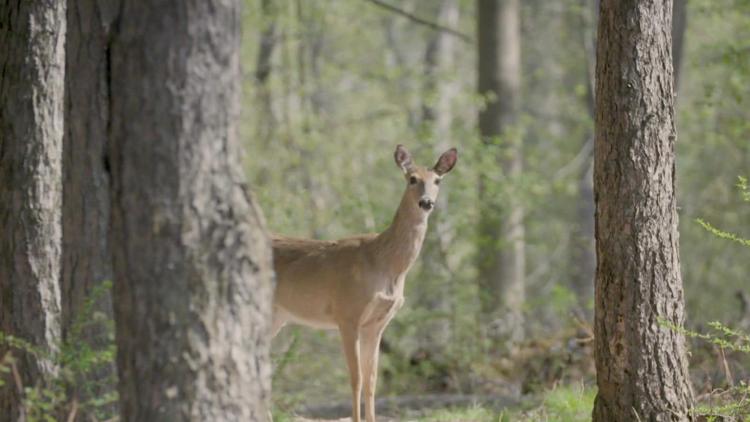HUNTSVILLE, Ala. — Opening day is approaching for firearms deer hunters in Alabama. Zones D and E (Cleburne and Winston counties, parts of Lawrence and Calhoun counties) open on Saturday, November 4. Firearms deer season for zones A, B and C opens two weeks later on Saturday, November 18. “We are blessed with a wide variety of diverse landscapes and an abundant deer herd,” said Chris Blankenship, Commissioner of the Alabama Department of Conservation and Natural Resources (ADCNR). “Our state’s natural diversity combined with some of the most liberal seasons and bag limits of any state in the nation makes Alabama’s deer season unique. We hope all of our resident and out of state hunters have a safe and successful season this year.”
Alabama offers more than 1.3 million acres of public hunting land that includes wildlife management areas, special opportunity areas, physically disabled hunting areas, Forever Wild Land Trust tracts, U.S. Forest Service and Army Corps of Engineer lands and the Wheeler National Wildlife Refuge. According to ADCNR, hunters can "pursue white-tailed deer from Alabama’s Gulf Coast to the Appalachian Foothills in the northeast corner of the state" with the exception of specific landowner exemptions.
People between the ages 16 to 64 are required to have a valid hunting license when hunting deer in Alabama. In the U.S., hunting licenses help fund wildlife conservation. ADCNR’s Wildlife and Freshwater Fisheries Division is primarily funded by money generated through the sale of hunting and fishing licenses. That money is matched on a nearly three-to-one basis by the U.S. Fish and Wildlife Service through funds allocated to Alabama from the Pittman-Robertson Act which levies an excise tax on firearms, ammunition and hunting equipment. For more information about license requirements in Alabama, visit www.outdooralabama.com/license-information.
If you are wanting to learn about firearm safety, ADCNR is having their 101 series of classes. It is for those who want to learn more about handguns and target shooting in a safe environment with certified firearms instructors. All participants must be 16 years of age or older. Some of those classes including the following:
- Handgun 101 - designed for beginners to intermediate shooters. Topics include safe handling and storage of firearms, the parts of semi-automatic handguns and revolvers, marksmanship, and live fire on paper and steel targets.
- Rifle 101 - designed for beginners. Topics include safe handling and storage of firearms, the parts of bolt action and semi-automatic rifles, marksmanship, and live fire on paper and steel targets.
- Shotgun 101 - designed for beginners to intermediate shooters. Topics include safe handling and storage of firearms, the types and parts of shotguns, marksmanship and live fire on moving clay targets.
- Practical Pistol Skills - a non-shooting class on carry options, strengths and weaknesses of revolver vs. semi-automatic handguns, flashlight techniques, movement and practice e using non-firing handguns.
Eye and ear protection, firearms and ammunition needed is provided free of charge. To participate in these classes, you will need a Wildlife Heritage License. For more information, you can visit here. This class is taught by Wildlife & Freshwater Fisheries Division Law Enforcement Firearms Instructors. A full list of classes can be found at their website.
Fundamental Firearm Courses produced by the International Hunter Education Association is also giving any new firearm owner the basics of firearm ownership from understanding calibers to best shooting stances for shooting success.
RELATED: Endangered red wolves need space to stay wild. But there’s another predator in the way — humans
RELATED: What to know about tick bites



